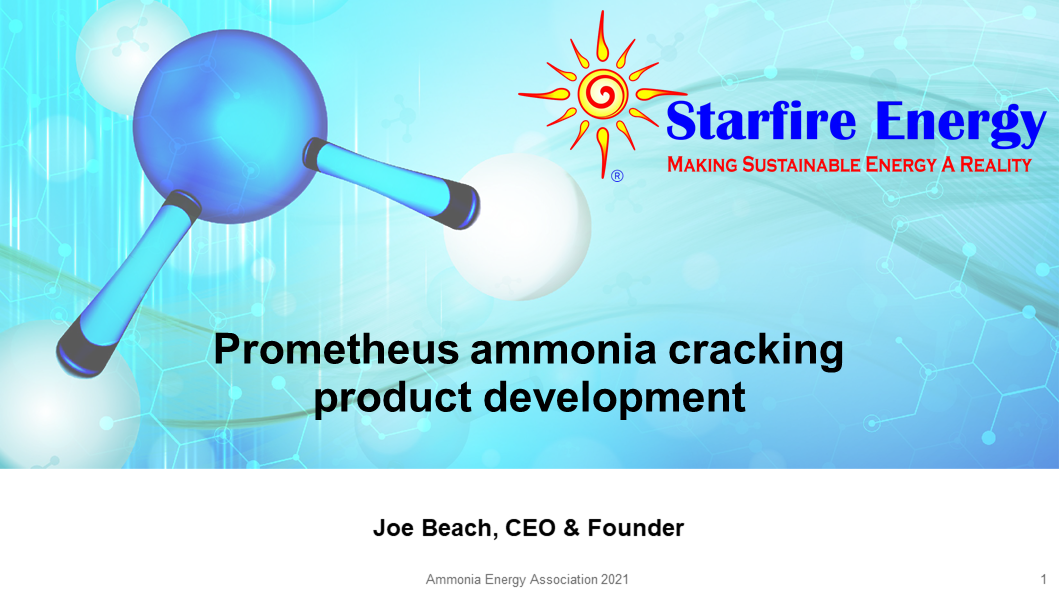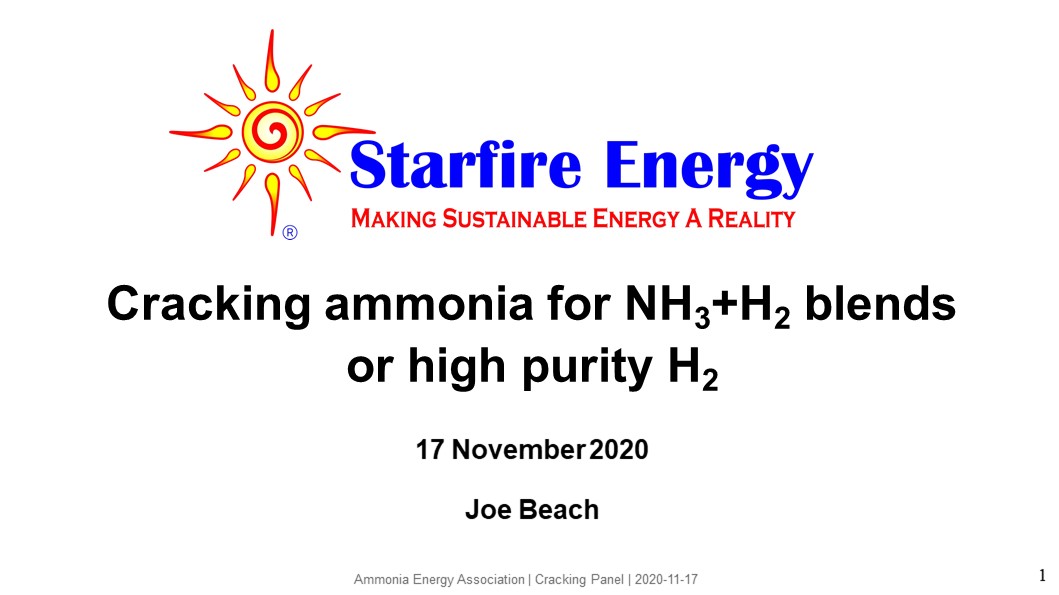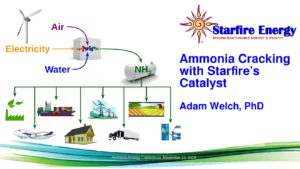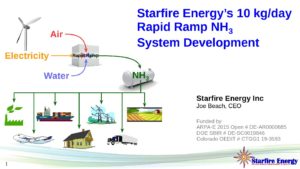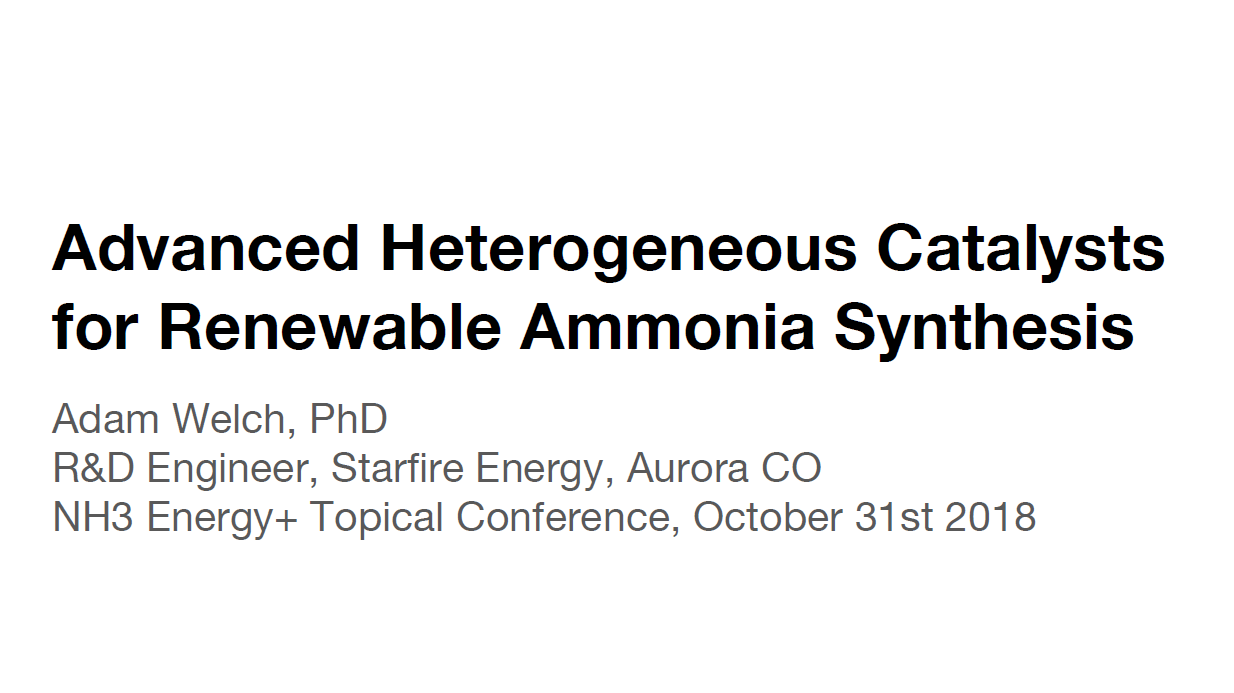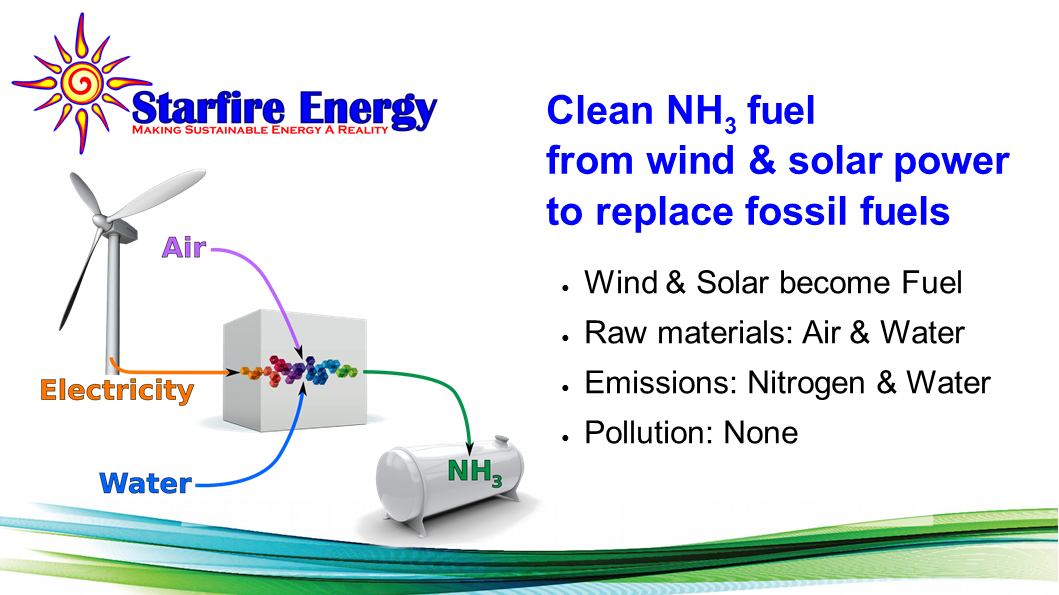This paper summarizes a comprehensive technical and economic analysis of a hydrogen-ammonia upgrade to an existing 42 MW natural gas plant. A phased approach is carefully chosen which deploys low-carbon technology in modules which are palatable by large-scale utility customers. The objective is to minimize capital costs of the conversion while maximizing decarbonization as each phase is deployed. A phased approach delivers optionality to utilities which are often locked into carbon-emitting technologies by protracted investment durations. Phase one details implementation of an on-site thermal pyrolysis system. Existing natural gas infrastructure and plant waste heat are used to provide clean hydrogen.…
Content by Author
Presentation
Starfire Energy's Prometheus ammonia cracking technology
The lowest cost way to use ammonia as a fuel is as an intact NH3 molecule. However, its slow flame speed can cause challenges managing flame stability, ammonia slip, and nitrogen oxide formation. Some fuel cells also require hydrogen, rather than ammonia. Ammonia cracking can solve these problems by providing either a NH3 + H2 + N2 blend or, with appropriate processing, pure hydrogen. Starfire Energy’s Prometheus cracking technology is a unique approach that uses an oxide catalyst bonded to a metal foil substrate. It provides excellent opportunities to power the cracking reaction with both waste combustion heat or purpose-generated…
Presentation
Starfire Energy's Rapid Ramp modular ammonia plant development status and trajectory
Starfire Energy has transformed from a grant-funded company to an investment-funded company. We are scaling up our Rapid Ramp ammonia production technology to provide renewable, flexible, modular ammonia fuel plants specifically designed to seamlessly integrate with naturally varying renewable power. We will provide an update on the status of our prototype modular Rapid Ramp pilot plant. We will also discuss the development path for mass produced modular plants and illustrate how they will provide the means to make affordable carbon-free NH3 fuel at a broad range of plant sizes and help drive ammonia fuel use to “fuel relevance” and onward…
Presentation
Starfire Energy's ammonia cracking and cracked gas purification technology
Ammonia cracking is important for both combustion and fuel cell applications. Starfire Energy has verified that a blend of 70% ammonia + 30% cracked ammonia can burn well in a conventional natural gas burner with very low ammonia slip and acceptable NOx using a stoichiometric fuel-air mixture. A 10 MW turbine or internal combustion engine using such a blend will need about 1.44 tonnes of cracked ammonia per hour. Starfire Energy’s monolith-supported cracking catalyst may be ideally suited for this application. Fully cracked ammonia retains several thousand parts per million of ammonia due to thermodynamic limitations. Residual ammonia can damage…
Presentation
High Flow Ammonia Cracking between 400-600°C
Traditional ammonia cracking is achieved at 850-950 °C in the presence of a nickel catalyst. The reaction is highly endothermic, and maintaining these high temperatures at high flow rates of ammonia gas can be difficult. Here, we present work using our advanced ammonia synthesis catalyst in an ammonia cracking setup. We use a metallic monolith catalyst support to minimize pressure drop at high flow rates. Full NH3 cracking occurs at 600 °C, with the onset of cracking at 400 °C. An output flame can be achieved with a fully tunable ratio of hydrogen to ammonia, depending on the temperature setpoint…
Presentation
Starfire Energy's 10 Kg/Day Rapid Ramp NH3 System Development
Starfire Energy is building a 10 kg/day NH3 synthesis system using its low pressure Rapid Ramp NH3 process. The system includes hydrogen production by proton exchange membrane electrolyzer, nitrogen production by pressure swing adsorption, NH3 synthesis, and liquid NH3 storage. The tight coupling of the hydrogen, nitrogen, and NH3 processes require minimal reactant buffering. The system design, status, and preliminary performance will be discussed.
Presentation
Rapid Ramp NH3 Prototype Reactor Update
Starfire Energy has built and operated a low pressure, fast-ramping prototype reactor using its Rapid Ramp NH3 process. It has synthesized, captured, and liquefied NH3 with all system pressures staying below 12.5 bar. The prototype reactor’s performance will be discussed.
Presentation
Advanced Catalysts Development for Small, Distributed, Clean Haber-Bosch Reactors
The traditional Haber-Bosch (HB) synthesis of anhydrous ammonia will adapt to clean power by sourcing the hydrogen from renewable electrolysis. However, the very large scale of current HB plant designs are not well-matched to smaller and more distributed clean power resources. Plant/reactor designs need to be made at a smaller scale in order to best utilize clean hydrogen. Small, megawatt scale HB reactors have an additional advantage of being better able ramp up and down with variable renewable power. This talk will detail ARPA-e funded work into the design and optimization of these smaller, clean NH3 reactors, which utilize much…
Presentation
Fast-Ramping Reactor for CO2-Free NH3 Synthesis
Starfire Energy is developing a fast-ramping reactor for making CO2-free NH3 for fuel, energy storage, and agricultural applications. A fast-ramping reactor is desired to follow (a) variable electricity generation from CO2-free sources such wind and solar power plants or (b) variable availability from CO2-free baseload electricity generation such as nuclear or hydroelectric power plants. The reactor builds upon the Haber-Bosch process by (a) introducing a higher activity supported Ru catalyst (over 4.5 mmol g-1 h-1 at 1 atm and over 45 mmol g-1 h-1 at 10 atm) and (b) further enhancing the catalysis by applying an electric potential or electric…


